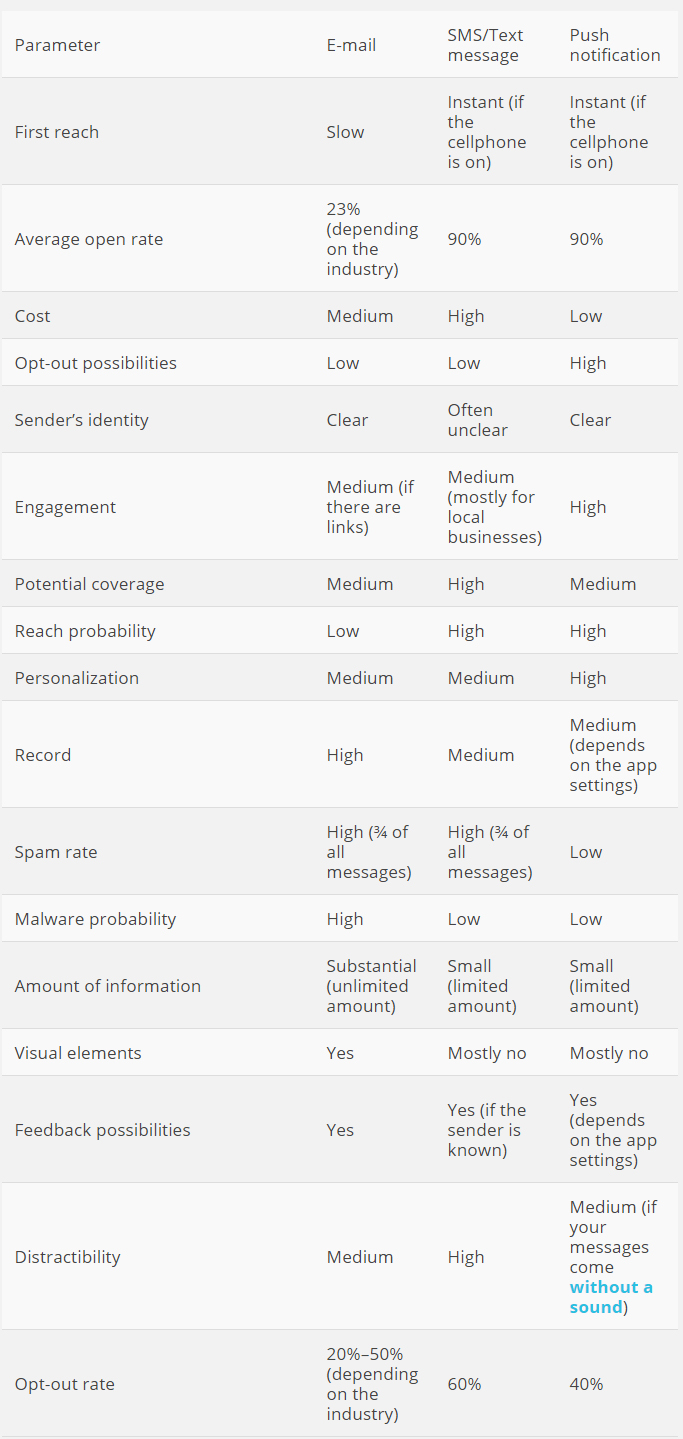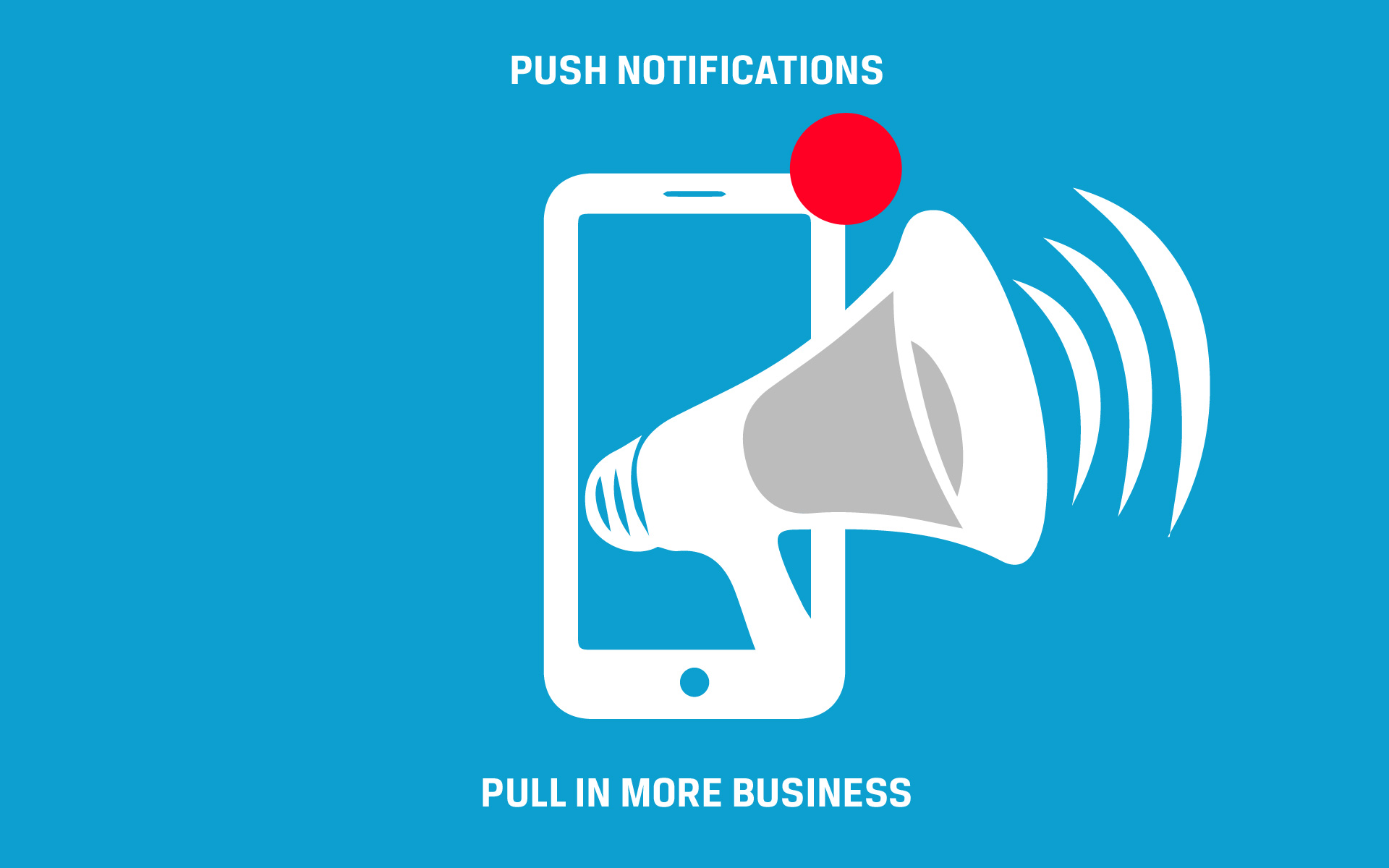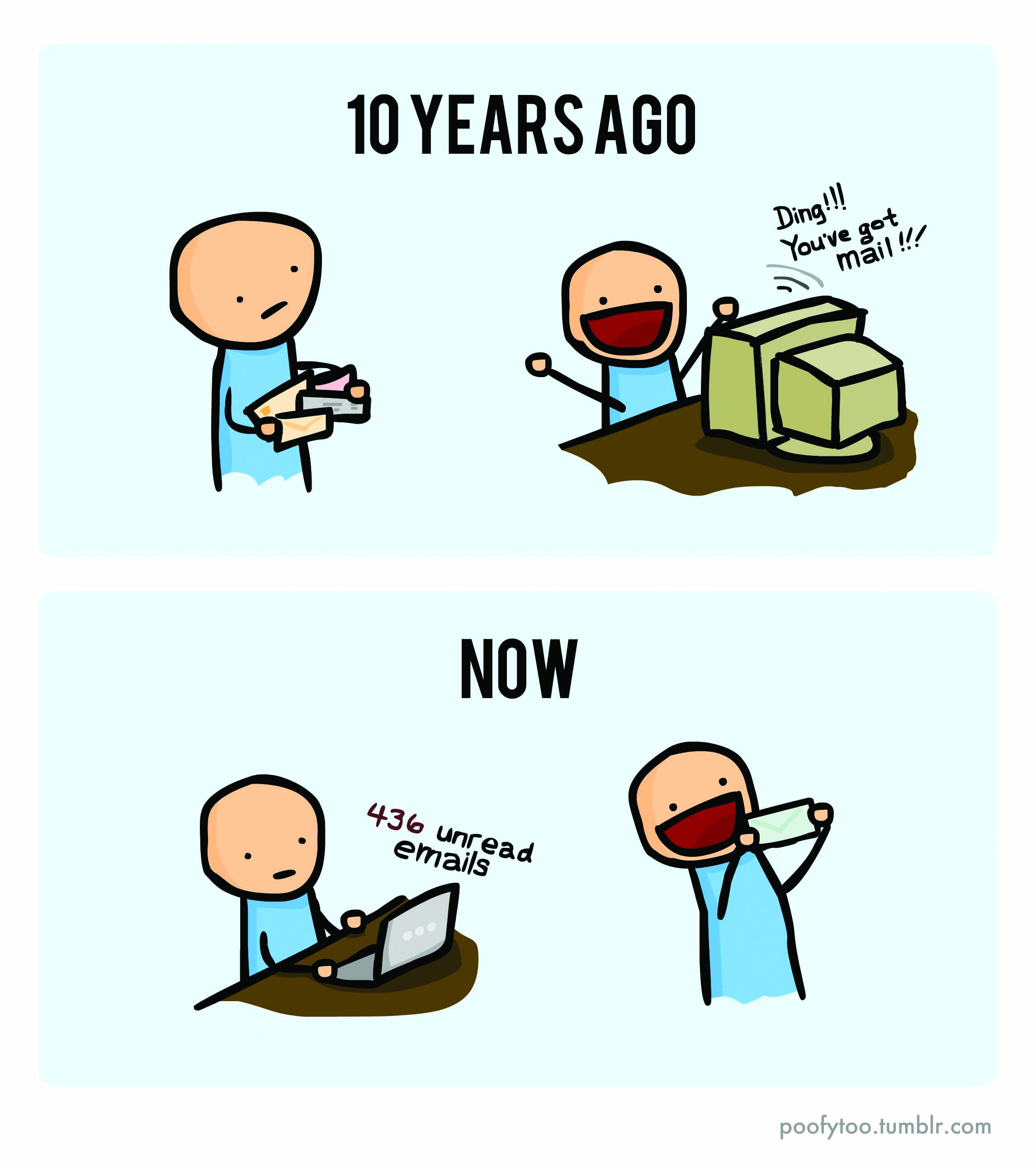As a marketer, you must have puzzled over which digital channel is more effective for connecting and engaging with your customers. Your ROI has to be high enough to justify the marketing budget, too. So, do you need to start mobile marketing? Should you stick to traditional SMS and e-mail routes or try push notifications?

Image Source: Paytronix.com
This comparison table will help you make the right choice:

Although e-mails and SMSs are fairly universal—i.e. if you have someone’s e-mail address or cellphone number, you can contact them directly without delay—they lack the personal touch and can even seem intrusive. And though mobile apps need to be downloaded and opened, they still have advantages over other digital channels. Here’s why.
E-mails are noted for higher malware spread probabilities, and if your e-mail marketer includes too much information in a message, it can be perceived as too noisy and not valuable to the customer.
According to ZipStripe research, it takes a recipient an average 6.5 hours to view an e-mail, but only 15 minutes to view SMSs and push notifications.
People check their personal emails for an average 20 minutes per day, but a typical smartphone is on for 16 hours per day. Coupon redemption for email averages less than 1%, while SMS coupon redemption averages 15%–20% and for push notifications it can be as high as 30%.
Text messages may seem similar to push notifications but they have significant differences. For one thing it costs the company a lot to send SMSs and it can end up costing the recipient too if they don’t have an unlimited texting plan. SMS vs text in your email loses, as the amount of textual and visual information is reduced.
A second difference is that users have total control over the push notifications they receive from mobile apps, unlike text messages, which can leave people wondering who they’re from and “How the heck did they get my cellphone number?” With push notifications users already know the brand so they’re a lot less spammy.

Image Source: Yodel Mobile Blog, Mobile Engagement Part 1: When Push Comes to Shove
Push notifications have higher engagement rates than SMSs or e-mails because they lead to a consistent app experience where you can implement user-friendly forms, gather feedback or form other ways of interacting. E-mails with links work a lot better on desktops as not many websites have a responsive or mobile version. Text messages are perfect for local businesses with temporary promotion campaigns but if the business is remote and the user has not subscribed for these notifications voluntarily, the engagement level will be almost zero.
It’s true that all three tools let you send one message to a large group of people. However, mobile apps collect users’ data—browsing history, retention data, digital activities etc.—so their notifications are a lot more personalized than e-mails or SMS messages. The whole brand experience is deeper and more valuable.

I’m not trying to say that e-mails or text messages are not effective in modern marketing—they are still powerful and universal tools. E-mails can contain more visual elements and more information in general, while text messages have a wide reach so work well with new customers who haven’t downloaded your mobile app yet.
Push notifications are geared toward audiences with high smartphone hold rates, and you need to invest into a mobile app first before you can send them. However, the advantages of push notifications—cost, engagement and delivery speed—mean you should definitely consider complementing your existing marketing strategy with mobile apps.
The most important thing is to understand your customers’ needs and habits so you don’t overwhelm them with countless messages. What digital channel do you prefer? Have you implemented push notifications into your marketing strategy? Please share your thoughts below.
Read the original post at PUBL.com
